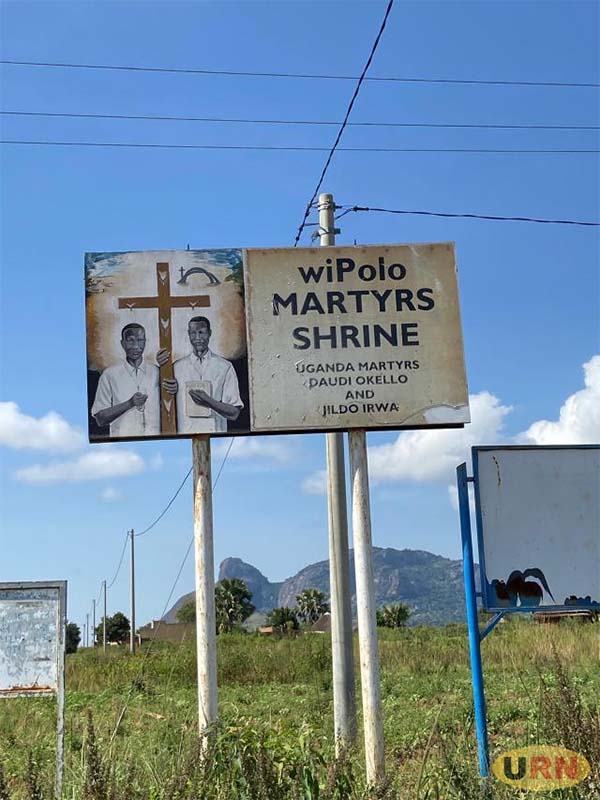
Kitgum, Uganda | THE INDEPENDENT | In a push to develop religious tourism in Uganda, the Uganda Tourism Board (UTB) is reawakening the Wipolo Martyrs’ Shrine, a significant site in the country’s religious tourism landscape. This renewed focus comes as Uganda celebrates the return of the Uganda Martyrs’ relics, Matia Mulumba and Kaloori Lwanga, who are among the inaugural 22 martyrs killed for their faith between 1885 and 1886.
The Wipolo Martyrs’ Shrine marks the location where Daudi Okello and Gildo Irwa, two teenage catechists turned martyrs, were killed. These two bring the total number of Catholic Ugandan martyrs to 24. At the time of their deaths, Daudi was 16 years old, and Gildo was just 12, two years younger than Kizito, who was among the first 22 martyrs. The pair was martyred on October 18, 1918, in Paimol, Kitgum District, northern Uganda, 31 years after their central region counterparts.
During a media visit to the site, seminarian James Ojok, who is involved in pastoral work at the shrine, explained that Okello and Irwa were killed just one year after their deployment to care for the fledgling church in the area. They had volunteered to replace Antonio, the first catechist, who had mysteriously passed away. Ojok noted, “Antonio, incidentally, was Daudi’s stepbrother.”
He described how the young catechists volunteered amid conflict between anti-colonial and anti-Christian movements, supported by local sorcerers and insurgents. Despite these threats, the catechists remained committed to spreading the gospel. They were aware of the risks but hoped to reunite with Antonio and Jesus Christ if they were killed.
The two were martyred by stabbing. Daudi was killed first, and Gildo followed after refusing to renounce his catechism teachings. Their last words, “Wonwa ma itye wi polo,” meaning “Our Father in heaven,” inspired the shrine’s name “Wipolo,” meaning “in heaven.”
The pair was beatified on October 20, 2002, at St. Peter’s Square in Rome by Pope John Paul II, following the discovery of significant historical evidence that supported their martyrdom.




The shrine stands as a powerful symbol of devotion and history, featuring an aged tree believed to have been a gathering place for the martyrs and a stone with holes from a traditional board game they played. The shrine serves as a spiritual destination, especially on October 20th each year, with pilgrims often digging soil from the martyrdom site, creating a symbolic crater.
The shrine, designed with respect for local traditions, includes few buildings to maintain the green landscape, with newly planted hedges and trees enhancing the serene environment. The entrance is marked by two simple arches supporting a cross, with pathways representing the Way of the Cross and the Mysteries of the Rosary leading to “The New Jerusalem” church.
The large esplanade at the shrine, an open area for communal celebrations, symbolizes the connection between nature and faith. The altar of celebrations, an open structure given to the church, bridges the site of the martyrdom with the celebration of faith.
Dr. Simplicious Gessa, UTB Head of Public Relations and Communication, highlighted the shrine’s high sentimental value and strategic location, noting its proximity to key wildlife areas like Kidepo Valley National Park. He emphasized that having a faith-based tourism site within this circuit leverages pilgrimage potential, making it a strategic marketing initiative for the country’s tourism sector. Gessa sees spotlighting the shrine as part of a broader plan to revitalize faith-based tourism in Uganda, a resource with significant untapped potential for the sector.
****
URN
 The Independent Uganda: You get the Truth we Pay the Price
The Independent Uganda: You get the Truth we Pay the Price




For your information, Paimol is in Agago district, NOT Kitgum district.